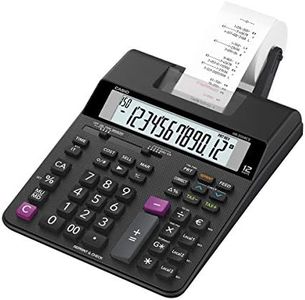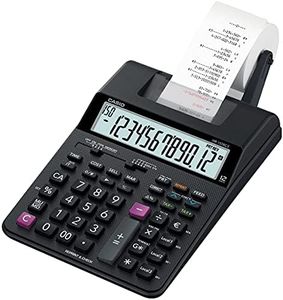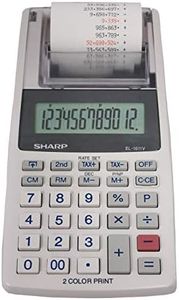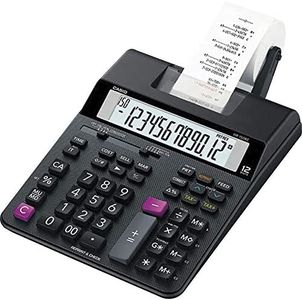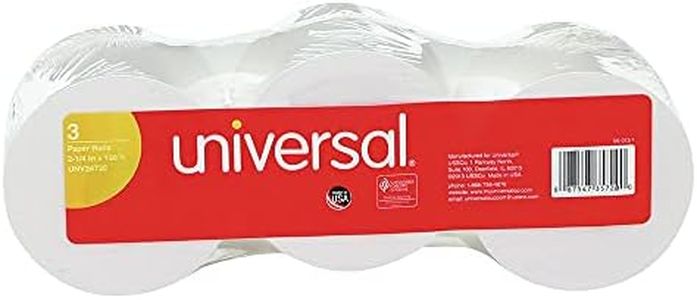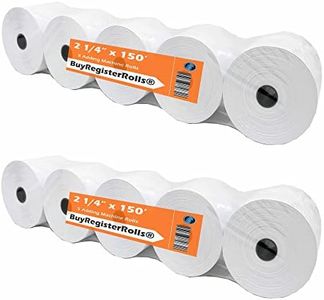We Use CookiesWe use cookies to enhance the security, performance,
functionality and for analytical and promotional activities. By continuing to browse this site you
are agreeing to our privacy policy
10 Best Adding Machine
From leading brands and best sellers available on the web.By clicking on a link to a third party's website, log data is shared with that third party.
Buying Guide for the Best Adding Machine
Choosing the right adding machine is all about understanding what features will make your calculations easier, quicker, and more accurate for your needs. Adding machines are widely used in offices, shops, and anywhere simple arithmetic tasks are routine. Focus on what types of calculations you will do, how often, and if you prefer printed or electronic records. Knowing your main tasks—like adding long columns, calculating taxes, or keeping records—will ensure you buy a machine that suits you without extra or missing features.Printing CapabilityPrinting capability refers to whether the adding machine can print out your calculations on paper tape. This is important if you need physical records of your calculations for filing, record-keeping, or double-checking your work later. Machines with printing tend to be bulkier but are very useful for accounting and bookkeeping tasks. Non-printing models are more compact and great for quick calculations where record-keeping is not required. Choose a printing model if you need physical documentation, or a non-printing one if portability and simplicity are your priorities.
Number of Digits DisplayedThis spec tells you how many digits are shown on the machine's display at once, typically ranging from 8 to 12 digits. It's important because it affects the size of the numbers you can work with. Lower-digit models (like 8-digit) are fine for basic addition and everyday transactions. For large sums, detailed financial work, or precise calculations, a 10 or 12-digit display is better to prevent errors due to truncation or overflow. Consider the typical size of the numbers you handle when deciding on this feature.
Tax and Business Function KeysSome adding machines come with special function keys for tasks like calculating taxes, profits, percentages, or even currency conversions. These can save time and reduce errors if you routinely perform these operations. If you often work with sales tax, commission, or need to add/subtract percentages, this feature will be valuable. If your calculations are basic, you can skip these extras without missing out.
Power SourceAdding machines can be powered in several ways: by batteries, by plugging into the wall, or both. Battery-powered machines offer portability, which is useful if you move around a lot or work where there may not be an easily accessible outlet. Plug-in models are better for stationary use, such as at a desk, and you don’t have to worry about replacing batteries. Pick the power setup that fits your primary workspace.
SpeedSpeed in adding machines refers to how quickly the machine processes and prints out calculations, measured in lines per second for printing models. If you process large batches of calculations regularly, a higher speed can greatly improve efficiency and reduce waiting time. For occasional or light usage, a slower machine will be sufficient.
Paper Roll Size (for Printing Models)For machines that print calculations, the size of the paper roll they accept matters. Larger rolls mean fewer interruptions to replace paper, which is helpful if you do a lot of calculations each day. Smaller rolls are lighter and make the machine more compact but will require more frequent changes. Consider your daily usage volume to choose the right paper roll size.
Key Size and LayoutThe size and arrangement of the keys can affect comfort and speed, especially during extended periods of use. Large, clearly marked, and well-spaced keys make it easier to enter numbers accurately and quickly. If you have big hands or expect to use the machine intensively, a more ergonomic layout can prevent mistakes and discomfort. For casual use, smaller keypads may be fine.




